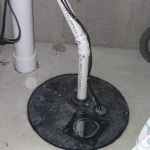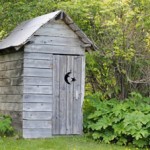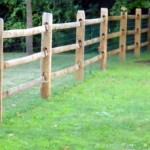Gas Fireplace Logs Installation Costs
Average Materials Cost: $150 - $500
Average Labor Cost: $450 - $1000
Avg. Time to Complete: 3-6 Hours, 1 Installer
Usually Includes: Gas Log Kit (Vented or Vent-free), Natural Gas Line Installation (Or Propane), Permits & Inspections as Needed, All Labor and Supplies to Complete the Project.
 Gas logs are widely replacing the wood burning fireplace in the living room of homes across the country. They burn clean natural gas or propane and aside from the appealing look, gas logs provide an invaluable source of emergency heating when the power goes out in the winter months and your furnace, heat pump, or heating system is shut off since most gas logs can run without electricity.
Gas logs are widely replacing the wood burning fireplace in the living room of homes across the country. They burn clean natural gas or propane and aside from the appealing look, gas logs provide an invaluable source of emergency heating when the power goes out in the winter months and your furnace, heat pump, or heating system is shut off since most gas logs can run without electricity.
Gas fireplace logs are a very a popular do it yourself home improvement project, or if you prefer, they can be installed by a handyman, plumber or HVAC contractor in about a half-day, at a very affordable installation cost.
We are going to discuss Gas Fireplace Logs in this Installation Cost Guide, and what you can expect to have done when you hire a company to install them for you, and which parts and tasks are usually included in the gas log installation cost. Finally, you will learn about the specialized tools or equipment you may need if you choose to install gas logs yourself, as well as a few ways you might save some money on gas logs.
Last Updated: 12/04/2012
Usually Included in Itemized Price Estimates
When a professional installer provides a gas log installation estimate for you, it will likely include the following items:
- Vented, or Unvented Gas Fireplace Log Kit. – A kit from either the contractor or you may provide your set of gas logs that you purchased at a hardware store, or big box warehouse like Home Depot or Lowes.
- Electric Service. (Optional) – If you install a gas log set or a blower unit that requires electricity, expect the cost of running electrical to the unit to be included.
- Connecting Gas Line to Log Kit. – This may involve running a new flexible copper, or solid gas piping to the fireplace for the logs.
- Gas Shut Off Valves as Needed – In most cases, you will have 2 shut-off valves.
- Inspection of Chimney Flue and Damper. – You should reasonably expect the installer to inspect and advise you on the condition of your chimney flue. It may require cleaning, or the damper may need repairs at the time of installation.
- Carbon Monoxide Detector. – Since gas fireplace logs use natural gas and partially (or completely) vent directly into your home, you should buy one yourself, or insist on having a carbon monoxide detector in the same room.
- Permits and Safety Inspections as Required. – If your city or town require permits and inspections to hook into your natural gas line, it should be included in your gas log installation cost.
Aside from the items above that are likely to be included, there are a few more things you might want to include in the cost to install your new gas logs. For instance, if you don’t have a cap on the top of your chimney flue, now might be a good time as about having it installed at the same time.
Tools and supplies used by the Pros.
Whether a plumbing professional or handyman installs your new gas fireplace logs, or if you choose to take the DIY installation route, you can expect the following tools to be needed.
- Common hand tools like hammers, screwdrivers, wrenches, etc.
- Pipe wrench possibly needed for black iron pipe.
- Impact drill for drilling a hole in the fireplace brick for the gas line.
- Pipe sealant or flaring tools for copper gas lines.
- Extension ladder to get to roof and inspect top of chimney.
Factors that Increase Installation Costs
The process of setting the logs into the fireplace, arranging the embers and logs onto the burner etc, are all pretty basic steps. The things that will cause you to pay more for your gas log installation are all related to the utilities you have available, how far they are and of course, the type of fireplace on your home.
- Brick Fireplaces – Drilling a hole through the brick for the gas line takes time.
- Availability and Distance to Gas Line – If your gas line is located on the other side of the home and 100 feet of copper tubing is needed, expect a higher cost.
- Gas Log Features – Features like remote controls, unvented logs and the higher quality and visual appearing logs cost more. The gas logs parts will range between $150 – $1,200 for very high-end logs with blower units.
- Glass Doors and Enclosures – If you’re required to add a set of glass doors or an enclosure, expect the cost to increase.
Ways to Save on New Gas Logs
Of course, buying the gas logs and installing them yourself is a great way to save money on gas log installation. Be aware in advance that just like gas furnace installation, working with natural gas is no joke, and your family safety is at risk. If nothing more, should you decide to install gas logs yourself, make sure you have a plumber inspect the gas line connections.
- Buy your own Gas logs and DIY installation.
- Drill the hole in the brick yourself.
- Offer to help the installer versus them needing a helper.
- Bundle multiple projects into one, to save on the cumulative total. (installing a chimney cap for instance)
If you want to offer other ways to save, please share them below.
Resources to Learn More about Gas Logs & Installation
DIY Network – Has a short tutorial about installing gas logs if you ALREADY have a gas line, and are only swapping out the log unit itself. It lists the time at 1 hour and the estimated cost at around $100.
Hansen Wholesale – Has a great resource page to learn more about installation and also where to find installers for gas logs.
National Fireplace Institute – If you prefer to work with a professional who is qualified through the NFI, use the locator service on the page. You will find a listing of companies in your area who are members of the NFI.
Do you have business that specializes in gas log installation? If so, contact us and point us to the page on your website where we can learn more about what you do, and how that page would be useful to other readers of our site.
Tagged With: fireplace logs, gas fireplace, gas fireplace logs, gas logs, unvented logs, vented logs


 Over the Range Microwave Installation Cost
Over the Range Microwave Installation Cost Sump Pump Installation Cost
Sump Pump Installation Cost Septic Tank Installation Cost Comparison
Septic Tank Installation Cost Comparison Split Rail Fence Installation Cost
Split Rail Fence Installation Cost